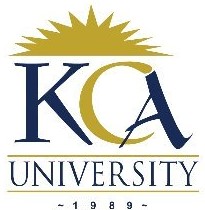
UNIVERSITY EXAMINATIONS: 2019/2020
EXAMINATION FOR THE DEGREES OF BACHELOR OF SCIENCE IN
INFORMATION TECHNOLOGY/ SOFTWARE DEVELOPMENT/
BUSINESS IT/ INFO. SEC& FORENSICS/ APPLIED COMPUTING
BAC 1102/ BISF 1102/ BSD 1105/ BIT 1106A/ BBIT 111: OPERATING
SYSTEMS
FULLTIME/ PART TIME/DISTANCE LEARNING
ORDINARY EXAMINATIONS
DATE: AUGUST, 2019 TIME: 2 HOURS
INSTRUCTIONS: Answer Question One & ANY OTHER TWO questions.
QUESTION ONE [30 MARKS]
a) Explain TWO main purposes of an operating system. (2 Marks)
b) Describe any FOUR attributes that should be considered when designing the file structure for
an operating system. (4 Marks)
c) Describe the following operating system related concepts:
i) Device controller (2 Marks)
ii) SMP (2 Marks)
iii) Spooling (2 Marks)
d) Describe the term ‘operating system utilities’ and highlight any FOUR such utilities.
(6 Marks)
e) Describe what is a ‘real-time system’. Offer its characteristics and where it is most applicable.
(5 Marks)
f) Distinguish between logical and physical address space. (4 Marks)
g) Outline any THREE advantages of multiprocessor systems over uniprocessor systems.
(3 Marks)
QUESTION TWO [20 Marks]
a) Outline the basic function of paging. (2 Marks)
b) Explain what happens during demand paging. (3 Marks)
c) i) What are the differences between internal fragmentation and external fragmentation?
(4 Marks)
ii) Explain the ways of overcoming both types of fragmentation in c(i) above. (4 Marks)
d) Describe the process of dynamic loading and explain how it aids in better memory space
utilization. (4 Marks)
e) Explain how swapping results in better memory management. (3 Marks)
QUESTION THREE [20 Marks]
a) What is a process and what are the attributes of a process? (4 Marks)
b) Explain the following terms with respect to process management:
i) Thread (2 Marks)
ii) Interrupt (2 Marks)
iii) Semaphore (2 Marks)
iv) Context switching (2 Marks)
c) Describe any FIVE examples of process states. (5 Marks)
d) Describe THREE types of CPU registers in a typical operating system design. (3 Marks)
QUESTION FOUR [20 Marks]
a) Explain how a file name EXAMPLEFILE.TXT would appear when viewed under the DOS
command console operating in Windows 98. (2 Marks)
b) Describe what is ‘Direct Access Method’ and list its benefits. (5 Marks)
c) Explain what the following MS-DOS commands will do during file management: (5 Marks)
i) dir /W
ii) dir /p
iii) diskcopy G: H:
iv) dir /OD
v) chkdsk G: /F
d) Give FOUR reasons why Ubuntu is considered ‘safe’ and not prone to viruses. (4 Marks)
e) Explain pros and cons of a command line interface. (4 Marks)
QUESTION FIVE [20 Marks]
a) List and describe the THREE memory allocation algorithms. (6 Marks)
b) Assume you have the following jobs to execute with one processor, with the jobs arriving in
the order listed here:

i) Suppose a system uses FCFS scheduling. Create a Gantt chart illustrating the execution
of these processes. (2 Marks)
ii) Calculate the average wait time for the processes. (2 Marks)
c) What is a race condition? Give an example. (4 Marks)
d) Discuss the advantages and disadvantages of user level threads. (6 Marks)
